If the canti post is damaged, this thread of mine on making a repair might help: https://www.retrobike.co.uk/threads/home-canti-stud-repair.409558/
You are using an out of date browser. It may not display this or other websites correctly.
You should upgrade or use an alternative browser.
You should upgrade or use an alternative browser.
GT Tequesta replacement part needed
- Thread starter AJ34
- Start date
A few photos...
It's the right side brake block that doesn't fit flush (see last photo). I've tried a different new brake block with the same result.
What do you think? Threaded or welded? No obvious evidence of a weld but not my area of expertise.
A few measurements...
Post O.D. = 8.8 to 8.9mm
Post length = 21 to 22mm (can't be certain because it appears that the outside thread engages only about 4mm into the frame fixing).
I.D thread = M6
I could probably add some sort of asymmetrical washer/spacer to the brake block thread - but that seems a bit of a bodge.
Point is, I can't be certain the post is bent. It's a close call. Could be the frame fixing that's now out-of-alignment.





It's the right side brake block that doesn't fit flush (see last photo). I've tried a different new brake block with the same result.
What do you think? Threaded or welded? No obvious evidence of a weld but not my area of expertise.
A few measurements...
Post O.D. = 8.8 to 8.9mm
Post length = 21 to 22mm (can't be certain because it appears that the outside thread engages only about 4mm into the frame fixing).
I.D thread = M6
I could probably add some sort of asymmetrical washer/spacer to the brake block thread - but that seems a bit of a bodge.
I'm not brave enough! I would prefer to purchase a selection of slightly different sized posts, one of which should fit, before I mangle the post in my attempts to remove it with a wrench. As far as I understand, if I damage the post but can't remove it then the bike's a gonner so I need to be reasonably confident the post is threaded before I attempt to remove it. If I can't be fairly certain, then I'll leave as is or maybe try a slanted/asymmetrical spacer/washer to even things up.To get the right part you'll need to remove the old one (to getvthe correct thread etc.). So dive in now and remove it.
Point is, I can't be certain the post is bent. It's a close call. Could be the frame fixing that's now out-of-alignment.
Thanks - will take a look.If the canti post is damaged, this thread of mine on making a repair might help: https://www.retrobike.co.uk/threads/home-canti-stud-repair.409558/
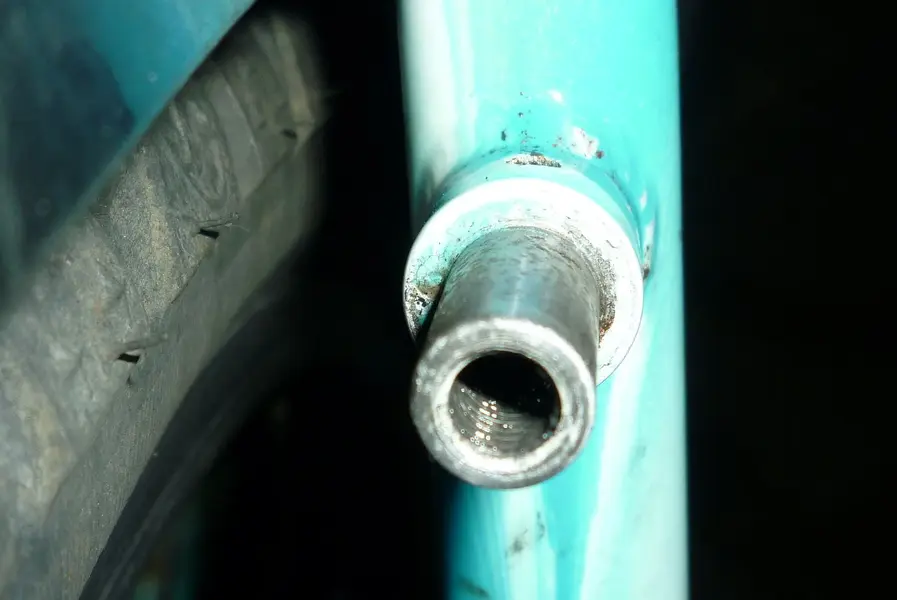
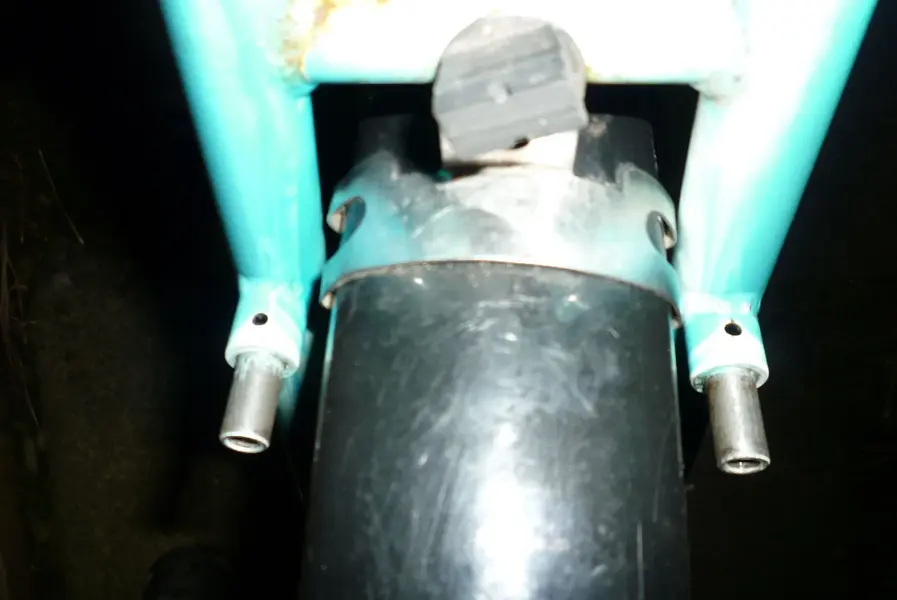
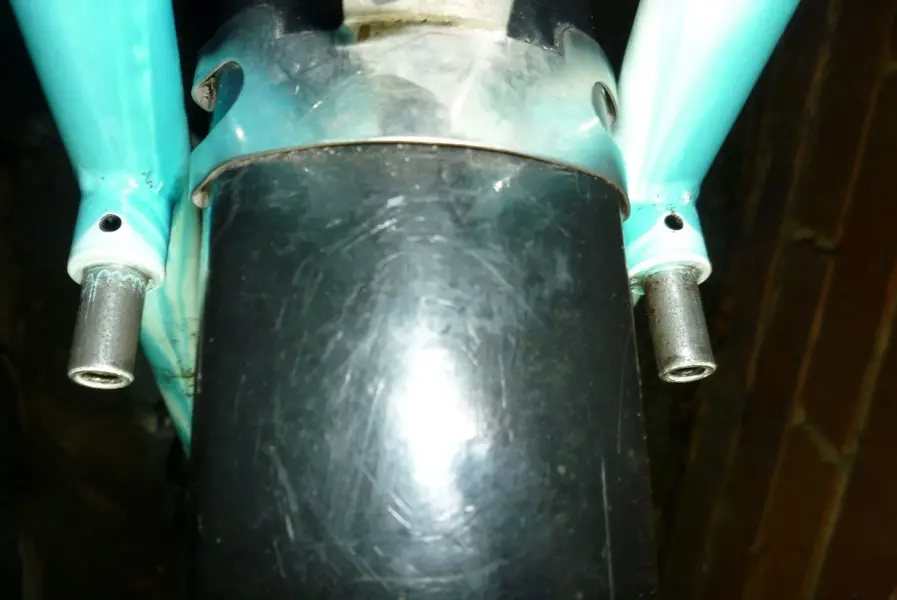
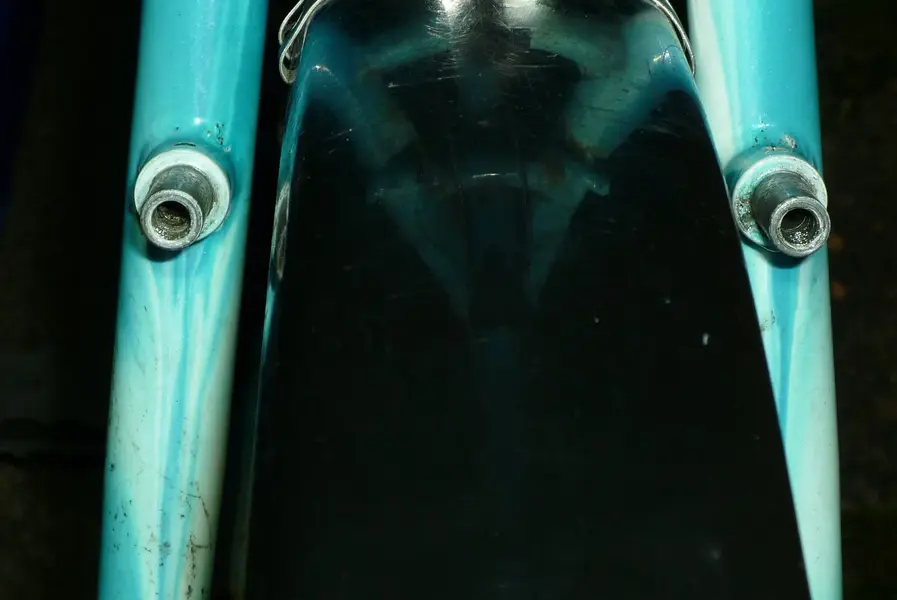
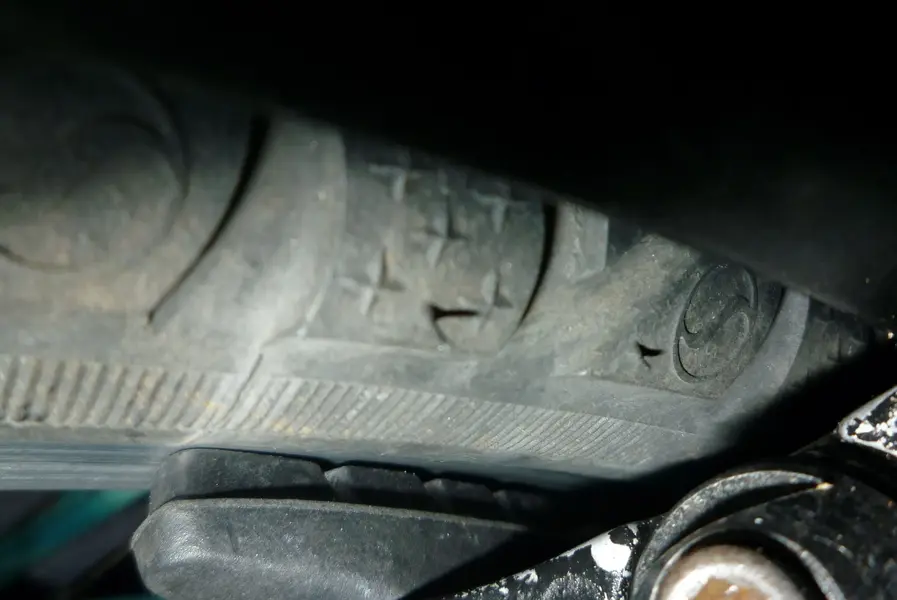
fettler
Senior Retro Guru
Brake posts look fine, you just need to adjust the angle of the brake pads. I can't see the brake properly but the brake pads should be mounted on dished washers to alter the angle. Ideally you want the leading edge to touch first with a 1 or 2 mm gap at the back. This toe in should prevent brake squeal and judder.
Whilst I'm aware of the brake's construction (obviously), I had no idea what this type of brake is called. Having Googled, I can see you're right to call it a U brake - so I guess the two rear brake posts should be called "U-brake posts". And I now understand that the front brakes are termed "cantilever brakes".That's not a canti post but a U-brake.
I have some dished washers but they didn't allow enough adjustment to correct the problem. I'm currently making a small, square aluminium wedge-type washer that should allow the brake blocks to contact the rim correctly.I can't see the brake properly but the brake pads should be mounted on dished washers to alter the angle.
Concerning dished brake block washers - how are they meant to be fitted? When I used them, they barely allowed any adjustment. How many should be used on one fixing, where should they be placed and which was round? Thanks.
I'm aiming for that, thanks.Ideally you want the leading edge to touch first with a 1 or 2 mm gap at the back.
No grub screws. The holes aren't threaded and are mirrored on the bottom too - a small screwdriver passes right through both at once. They may be used when aligning the posts (probably threaded) the correct distance into the frame fixing points. Maybe?I wonder if the holes above the posts on the frame have grub screws holding on the pivots as they don't look welded. Not seen holes there on any bike I've had.
I meant "where should they be placed and which way round?where should they be placed and which was round?
fettler
Senior Retro Guru
There should be 2 pairs of washers with each brake block, one pair between the block and the brake, one pair between the brake and the securing nut. This should allow about 5 to 10 degrees of waggle before they are tightened. The washers should come with the brake blocks if you buy some.
Ren Rawbor
Fat Chance Fan
I wonder, if there isn't possibly some damage/wear to the U brake (assuming correctly placed washers as described above doesn't sort it)?
There is no obvious wear that I can see. I appreciate that the photos I posted (post#12) don't really show that the right side brake fixing post, or the frame fixing point, is out-of-true but I believe I can see it, albeit (as I've said) only very marginally. Thing is, the brake blocks are far longer than the fixing post so any marginal misalignment of the brake fixing point is kind of amplified at the brake block end - don't know what this effect would be termed but it's akin to a leverage effect. So, if the open end of the fixing post was, say, 1mm out-of-true, then one end of the brake block would probably be around 3mm out-of-true.I wonder, if there isn't possibly some damage/wear to the U brake (assuming correctly placed washers as described above doesn't sort it)?
I get it, thanks. One washer of each pair is convex, the other washer is concave. Convex surface of one washer fits into concave surface of other so there scope for a little movement. Will remember for next time, meanwhile the wedged aluminium spacer/washer I fashioned does the job nicely.There should be 2 pairs of washers with each brake block, one pair between the block and the brake, one pair between the brake and the securing nut. This should allow about 5 to 10 degrees of waggle before they are tightened. The washers should come with the brake blocks if you buy some.
Thanks to all for your inputs. Appreciated.
Similar threads
- Replies
- 0
- Views
- 499
- Replies
- 6
- Views
- 302
- Replies
- 12
- Views
- 1K